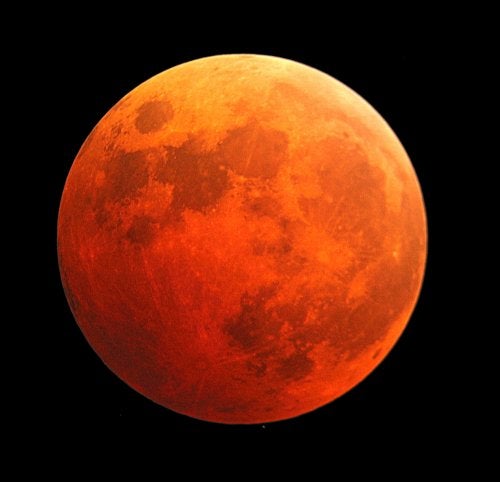“April 12, 1968, dawned like most other days. It was a Friday, and I was looking forward to the weekend. I wanted to relax after what had been, at least through the eyes of a twelve-year-old, another trying week of school and homework. All this was about to change as I entered my 6th-grade science class that day. Against his usual policy, my teacher, Mr. Clark, had a weekend homework assignment posted on the blackboard. That night, he told us, there was going to be a total eclipse of the Moon. He wanted us all to watch it from our homes and write down our observations to hand in as a report on Monday. Just my luck, I thought.
I would have preferred to stay inside and watch one of the evening’s television offerings, but instead, I set up a card table and lawn chair, and brought out a pair of small binoculars. The eclipse began right on time, just as Mr. Clark had promised. Slowly, over the next several hours, the Earth’s shadow silently devoured the Moon, turning it a deep-orange color around the middle of the eclipse. I don’t remember the exact moment, but sometime during that eclipse, something clicked. I became so engrossed with the eclipse that I watched it in an almost hypnotic trance. That was it; I was hooked on the sky and just had to learn more.“
Truth be told, binoculars are the ideal instrument for viewing a total lunar eclipse — what we are going to witness on March 3. Telescopes tend to over-magnify to the point that the subtle colors we see transmitting through Earth’s shadow tend to wash themselves out. Binoculars, on the other hand, seem to intensify the coloration, perhaps because of their lower magnification and wider fields of view.
But there can be more to viewing this eclipse than just enjoying the event unfold through your binoculars. Here’s one idea for an interesting series of observations that I suggest in Eclipse! Normally, the Full Moon shines at magnitude –12.7. How faint does it get during a total eclipse? Any guesses? –4? –2? 0? Actually, it can get much dimmer than that, but trying to estimate the exact brightness of the Moon is not as easy as it may sound.
First, you must shrink the Moon to a point of light. How? By looking at the Moon through your binoculars … backwards. The Moon will shrink by the inverse of the binoculars’ magnification (e.g., through 7x binoculars, the Moon will appear 1/7 as large as with the naked eye).
Aim the binoculars toward the Moon, and look through one of the objective lenses with one eye. With the other (unaided) eye, look around the sky for suitably bright stars to judge the Moon against. Best results are had by comparing the Moon against two stars, one a little brighter and one a little fainter.
If possible, use comparison stars that lie at more or less the same altitude above the horizon as the Moon, to ensure that atmospheric interference does not unduly affect the estimate. Find the stars’ apparent magnitude (available from just about any computer planetarium program), judge which star the Moon appears closest to, and prorate your magnitude estimate accordingly.










